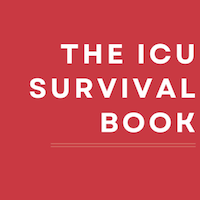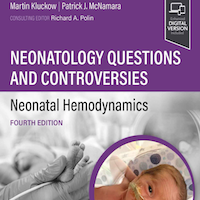Tag: transfusion
Association Between Initial Blood Product Transfusion with a Higher Plasma-to-red Blood Cell Ratio and Mortality in Adults with Severe Bleeding Following Trauma
This study demonstrates that a high fresh-frozen plasma (FFP) to packed red blood cells (PRBC) ratio (>1:1.5) is associated with reduced 24-hour and 30-day mortality rates among trauma patients with massive hemorrhage. However,... read more
The ICU Survival Book
The ICU Survival Book is a guide for residents, students, advanced practice providers, and critical care nurses who want to learn the basics of critical care medicine. This reference is designed to follow the systems-based... read more

Platelet Transfusions: Ten Things ICU Specialists Need to Know
Thrombocytopenia is common in critically ill patients and is associated with higher bleeding risk and worse outcomes. Platelet transfusions are frequently used to prevent or treat bleeding, though often with uncertain... read more
Factors Affecting the Duration of Hospitalization in Urology and Nephrology Patients in the ICU
Factors affecting ICU stay length in Urology and Nephrology patients who required close monitoring and specialized medical staff were investigated. The study found a positive association between prolonged ICU stays and elevated... read more
Thrombocytopenia and Platelet Transfusions in ICU Patients
In this international prospective cohort study of acutely admitted adult ICU patients, we found that 43% had thrombocytopenia; 23% at ICU admission and 20% developed it during ICU stay. Patients with thrombocytopenia... read more
Acute Undifferentiated Fever with Thrombocytopenia: Clinical and Etiological Profile
Prompt recognition and management of thrombocytopenia in acute undifferentiated fever are vital. Thrombocytopenia, along with organ dysfunction and shock, significantly influence patient outcomes. Tailored interventions based... read more
Neonatology Questions and Controversies: Neonatal Hemodynamics
Dr. Richard Polin's Neonatology Questions and Controversies series highlights the toughest challenges facing physicians and care providers in clinical practice, offering trustworthy guidance on up-to-date diagnostic and treatment... read more

No Benefits For Using 4-Factor Prothrombin Complex Concentrate (4F-PCC) in Trauma Patients
Early administration of 4-factor prothrombin complex concentrate (4F-PCC) was of no benefit to patients with trauma at risk of massive transfusion, the randomized PROCOAG trial from France showed. Among over 300 patients... read more
PPIs Should Not Be Prescribed for Upper GI Bleeds
The topic of PPIs for upper GI bleeds was one of the first posts on First10EM. There is no new evidence, and the bottom line is the same (just don’t use them), so if you are a long time reader, you can probably skip this... read more
Resuscitation with Blood Products in Patients with Trauma-related Hemorrhagic Shock Receiving Prehospital Care
The trial did not show that prehospital PRBC–LyoPlas resuscitation was superior to 0·9% sodium chloride for adult patients with trauma related hemorrhagic shock. Further research is required to identify the characteristics... read more
Cluster ICU Treatment Strategies for TBI by Hospital Treatment Preferences?
Although correlations between treatment policies within domains were found, the failure to cluster hospitals indicates that a specific treatment choice within a domain is not a proxy for other treatment choices within or... read more
Prolonged Blood Storage and Risk of Posttransfusion AKI
In a population of patients without severely impaired baseline renal function receiving fewer than 10 erythrocyte units, duration of blood storage had no effect on the incidence of posttransfusion acute kidney injury (AKI). The... read more
Predicting Outcomes in Pediatric Trauma Patients Using rSI Multiplied by GCS
Reverse shock index multiplied by Glasgow Coma Scale outperformed SI and shock index pediatric age-adjusted (SIPA) in the early identification of traumatically injured children at risk for early interventions, such as blood... read more
Economical provision of blood components for critical patient transport across a large geographic area
With appropriate attention to detail, it is possible to provide life-saving blood components to aeromedical transport services across a large geographic area with efficient blood component usage, minimal blood wastage, and... read more
Precision Medicine in ARDS
Acute respiratory distress syndrome (ARDS) is a devastating critical illness that can be triggered by a wide range of insults and remains associated with a high mortality of around 40%. The search for targeted treatment for... read more
Combined Platelet and Erythrocyte Salvage: Evaluation of a New Filtration-based Autotransfusion Device
This study demonstrated the performance of the SAME device. Platelets and red blood cells were salvaged without significant impact on cell integrity and function. In the meantime, leukocytes were not activated, and the washing... read more
Transfusion Strategies for Acute Upper Gastrointestinal Bleeding
As compared with a liberal transfusion strategy, a restrictive strategy significantly improved outcomes in patients with acute upper gastrointestinal bleeding. We enrolled 921 patients with severe acute upper gastrointestinal... read more
Transfusion Associated Circulatory Overload
A 67-year-old female with a history of congestive heart failure and CKD was brought in by ambulance from her nursing home for a gastrointestinal bleed. The patient’s total fluid balance from her nursing home was 2.5L over... read more
TEG for Hypocoagulable Patients with Non-Traumatic Bleeding
Thromboelastogram (TEG) has been extensively studied in trauma and surgical patients, but has not been well studied in nontraumatic bleeding, nor has its use been well evaluated in the emergency department. This study... read more
Scvo2 in Sepsis: A Measurement Provided by Respiratory Care Practitioners
When treating patients with sepsis, intensive care unit (ICU) and emergency department clinicians have learned that improved outcomes occur when staff members work together as a team. This article outlines the value of central... read more
The Misunderstood Coagulopathy of Liver Disease
In patients with abnormal coagulation testing results in the setting of liver disease, INR and PT may be best used to provide the practitioner with information about the synthetic function of the liver but not to assess hemorrhagic... read more
Sudden Abdominal Pain with a Palpable Mass
Rectus sheath hematoma (RSH) is a rare cause of abdominal pain that is often overlooked when patients present for evaluation. The disease can mimic almost any other type of abdominal pathology, and thus the diagnosis is frequently... read more









